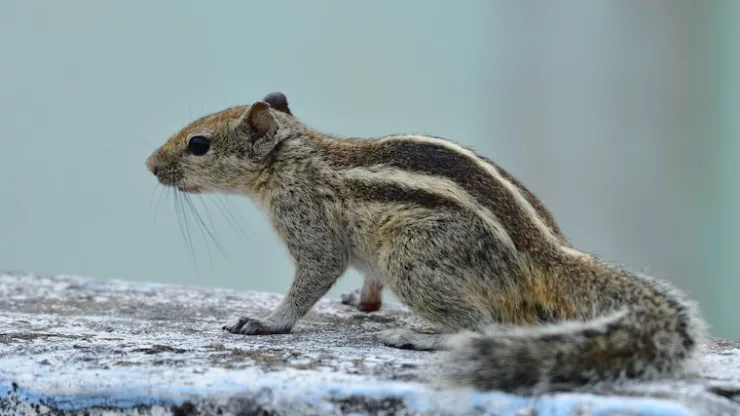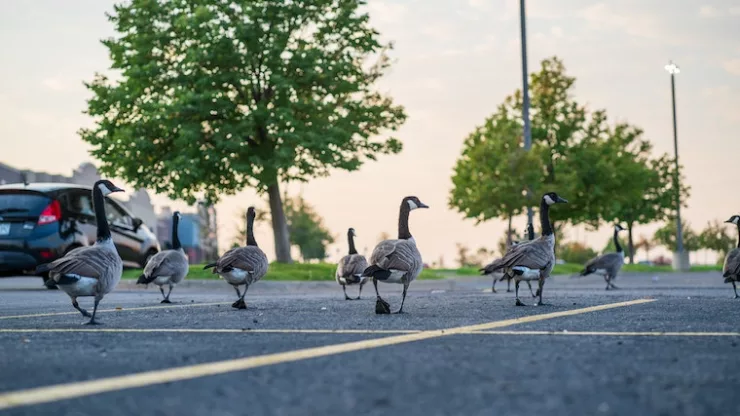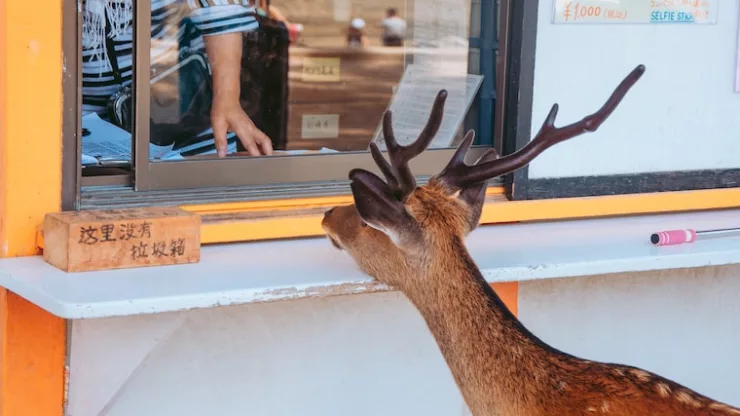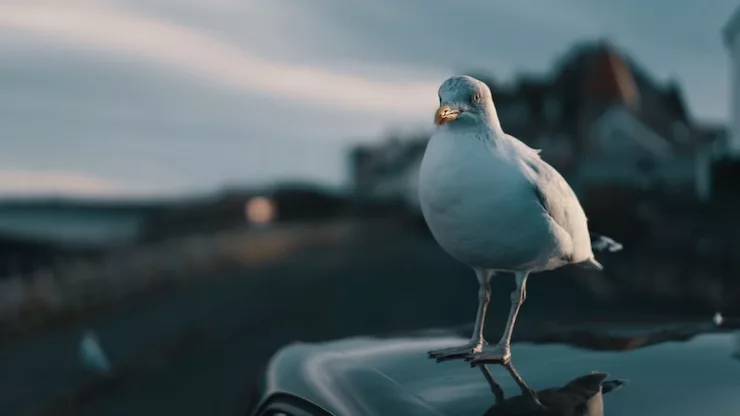The idea of wild animals living in urban areas might seem like a strange concept at first.
One would think that cities are only meant for humans and their modern way of living.
Yet, the reality is that wild animals have adapted to urban environments and have become a regular occurrence in many cities around the world.
From squirrels and raccoons to coyotes and deer, it’s not uncommon to see a variety of wildlife roaming the streets of our cities.
The coexistence of humans and wild animals is a surprising reality that has emerged as a result of urbanization.
As cities continue to grow and expand, wildlife has been forced to adapt to their new surroundings and find ways to survive amidst the concrete and steel.
While this may seem like a challenge for both humans and animals alike, it has also created a unique opportunity to appreciate the beauty of nature in our cities and find ways to live in harmony with the wildlife around us.
Jump to Section
The Reasons Behind Wild Animals Living in Cities
There are several reasons why wild animals have made their way into urban areas. One of the main reasons is habitat loss.
As cities continue to expand, they encroach on the natural habitats of animals, leaving them with no choice but to adapt and find new homes in the city.
Another reason is food availability.
Urban areas provide a steady supply of food for animals, whether it’s from the garbage cans on the street or the gardens in people’s backyards.
Additionally, some animals are attracted to cities because they offer protection from predators.
In the wild, animals are constantly on the lookout for predators and are at risk of being hunted.
In the city, however, predators are few and far between, making it a safer environment for animals to thrive. Lastly, climate change is also a contributing factor.
As temperatures rise, some animals are moving to cooler areas, including urban environments.
The Diversity of Wild Animals Found in Urban Areas
The diversity of wild animals found in urban areas is surprising.
While some may think that only small animals like squirrels and birds would be able to survive in the city, the reality is that larger animals like foxes, deer, and even bears have been spotted in some cities.
In fact, a study by the Wildlife Conservation Society found that there are roughly 800 species of animals that call New York City home, including coyotes, red-tailed hawks, and even harbor seals.
The table below shows some of the most common wild animals found in urban areas:
| Animal | Habitat | Diet |
|---|---|---|
| Raccoon | Trees, attics, and sewers | Omnivorous – eats both plants and animals |
| Squirrel | Trees and parks | Nuts, seeds, and fruits |
| Coyote | Parks and green spaces | Rabbits, rodents, and fruit |
| Deer | Parks and golf courses | Leaves, twigs, and fruit |
| Skunk | Under porches and decks | Insects and small animals |
| Fox | Urban parks and golf courses | Small rodents and insects |
The Impact of Urbanization on Wildlife
Urbanization has had a significant impact on wildlife. As cities continue to expand, natural habitats are being destroyed, and animals are being forced to adapt to new environments.
This can lead to a decline in the number of some species, as well as changes in behavior and migration patterns.
Additionally, urbanization can also increase the risk of human-wildlife conflicts.
Animals may enter residential areas in search of food or shelter, leading to property damage and potential danger to humans.
In some cases, animals may become aggressive towards humans, posing a threat to public safety.
This has led to increased efforts to manage and control wildlife populations in urban areas.
The Adaptation of Wild Animals to Urban Environments
Wild animals have shown an incredible ability to adapt to urban environments.
They have learned to navigate the streets, avoid traffic, and find food and shelter in the city.
Some animals have even developed new behaviors to help them survive in the urban environment.
For example, many birds have learned to sing louder in the city to be heard over the noise of traffic, while some animals have become nocturnal to avoid human activity during the day.
Some species have also changed their diet to include more human food, such as raccoons and their love for garbage.
The Benefits of Having Wild Animals in Urban Areas
Having wild animals in urban areas can provide many benefits.
For one, it can help to reconnect people with nature and create a greater appreciation for wildlife.
It can also help to improve the biodiversity of cities and create new opportunities for research and conservation efforts.
Wild animals can also help to control pests in urban environments.
For example, birds of prey like hawks and falcons can help to control rodent populations, while bats can help to control mosquito populations.
Additionally, wild animals can create a sense of wonder and excitement in urban environments, providing a unique experience for residents and tourists alike.
The Challenges of Managing Wild Animals in Urban Areas
While having wild animals in urban areas can be beneficial, it also presents a number of challenges.
As mentioned earlier, human-wildlife conflicts can arise, leading to property damage and potential danger to humans.
Additionally, some species can become invasive and cause damage to the local ecosystem.
Managing wildlife populations in urban areas requires a delicate balance.
It’s important to find ways to prevent conflicts with humans while also preserving the natural behaviors and habitats of wildlife.
This often requires the cooperation of local communities, wildlife experts, and government agencies to develop effective strategies for managing wildlife populations.
The Importance of Preserving Green Spaces in Cities
Preserving green spaces in cities is crucial for the survival of wildlife.
Green spaces provide vital habitats and food sources for animals, as well as opportunities for migration and breeding.
They also help to regulate the temperature of cities and improve air quality.
Unfortunately, many cities are facing pressure to develop these green spaces in favor of new buildings and infrastructure.
However, it’s important to recognize the value of these green spaces and find ways to preserve them for both wildlife and humans to enjoy.
The Role of Communities in Protecting Urban Wildlife
Communities play a vital role in protecting urban wildlife.
By educating themselves about the local wildlife and their behaviors, residents can take steps to prevent conflicts and promote coexistence.
This may include securing trash cans to prevent scavengers, removing potential food sources from yards, and avoiding feeding wild animals.
Communities can also support conservation efforts by volunteering with local wildlife organizations, participating in citizen science projects, and advocating for green spaces in their communities.
By working together, communities can create a more sustainable and harmonious environment for both humans and wildlife.
A Renewed Appreciation for Nature in Our Cities
The coexistence of humans and wild animals in urban areas is a surprising reality that has emerged as a result of urbanization.
While it presents a number of challenges, it also provides opportunities for us to appreciate the beauty of nature in our cities and find ways to live in harmony with the wildlife around us.
As we continue to expand and develop our cities, it’s important to remember the role that green spaces and wildlife play in creating a healthy and sustainable environment.
By working together to protect and preserve these spaces, we can create a future in which humans and wildlife can thrive together.
I’m a nature enthusiast and creator of Metro Wilds and have spent years exploring the great outdoors.
With a passion for environmental conservation and sustainability, I have dedicated my career to writing about the beauty and wonders of nature, as well as the threats facing our planet.
Contact me at [email protected] for assistance.





